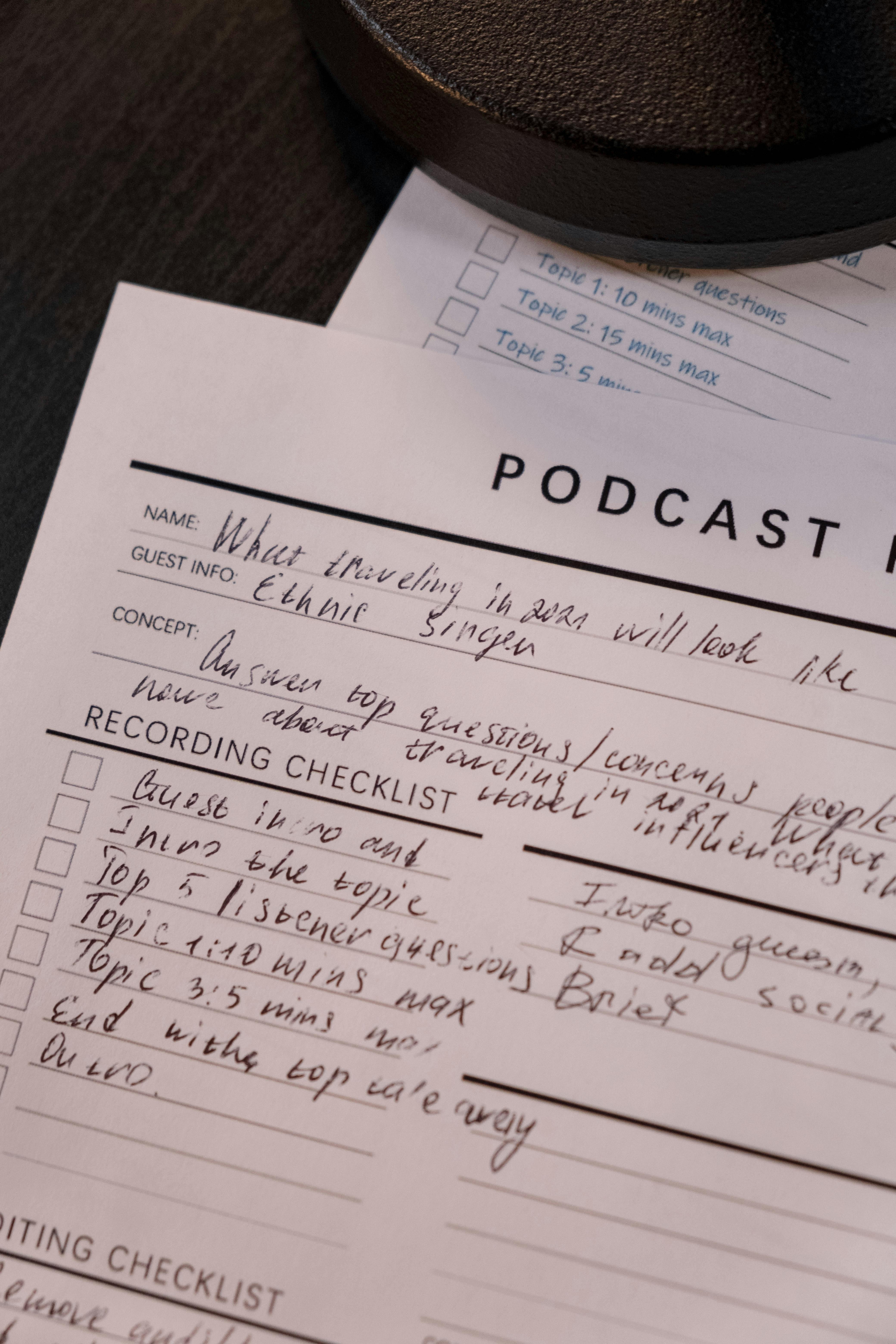In the digital age, guest posting has emerged as a powerful strategy for building backlinks and enhancing your website’s authority. However, many marketers overlook the importance of auditing their guest post backlink profiles to ensure maximum impact. Are you leveraging your guest posts effectively, or are you missing out on valuable traffic and SEO benefits? In this article, we will delve into the crucial steps on how to audit your guest post backlink profile and uncover the secrets to optimizing your strategy for better results.
Understanding your backlink profile is essential for driving organic traffic and improving your search engine rankings. A comprehensive backlink audit allows you to identify high-quality links, eliminate toxic ones, and capitalize on opportunities for improvement. But where do you start? Begin by gathering data on all your guest posts and their linking domains. Use tools like Ahrefs or Moz to analyze your backlinks and evaluate their domain authority and relevance. This process will help you recognize patterns, such as which types of content attract the most backlinks and which domains contribute the most to your website’s credibility.
Once you’ve gathered your data, the next step is to assess the quality of each backlink. Are they coming from reputable sources? Do they align with your niche or industry? By answering these questions, you can refine your backlink profile and focus on building relationships with high-authority websites. Remember, not all backlinks are created equal; prioritizing quality over quantity can yield significant long-term benefits. So, are you ready to transform your guest post strategy and unlock the full potential of your backlink profile? Let’s dive deeper into the auditing process and explore effective methods to enhance your online presence!
7 Essential Steps to Effectively Audit Your Guest Post Backlink Profile for SEO Success

In the fast-paced world of digital marketing, understanding the importance of a guest post backlink profile can’t be overstated. Backlinks can make or break your SEO efforts, and auditing them regularly is crucial for maintaining a healthy online presence. So, how do you go about it? Here’s a guide that outlines 7 essential steps to effectively audit your guest post backlink profile for SEO success.
1. Gather Your Backlink Data
The first step in auditing your guest post backlink profile is to gather all your backlink data. You can use various tools such as Ahrefs, SEMrush, or Moz to pull this information. It’s important to export a complete list of your backlinks, including their source URLs, anchor texts, and the authority of the linking domains. By collecting this data, you will have a comprehensive view of your backlink landscape.
2. Analyze Domain Authority
Next, focus on the domain authority (DA) of the sites linking to your guest posts. High DA signifies a reputable site, which is a good thing for your SEO. You can categorize your backlinks into three groups based on their DA:
- High Authority (DA 40+): These are your gold mines, they could drive significant traffic and enhance your credibility.
- Medium Authority (DA 20-39): These sites are usually decent, helping your profile but not as impactful as high DA ones.
- Low Authority (DA <20): These links might be harmful to your profile, and you should consider disavowing them.
By analyzing the authority of each link, you can get rid of the bad apples that may harm your SEO efforts.
3. Check for Relevance
After establishing the authority of the linking domains, the next step is to assess relevance. Your backlinks should be coming from sites that are relevant to your niche or industry. A link from a cooking blog to a tech website, for example, doesn’t hold much value. You can create a table to visualize relevance better:
| Backlink Source | Relevance (Yes/No) | Notes |
|---|---|---|
| cookingblog.com | No | Irrelevant topic |
| techreview.com | Yes | Highly relevant |
Assessing relevance helps you determine which links truly benefit your SEO strategy.
4. Evaluate Anchor Texts
Anchor texts are crucial in determining the context of your backlinks. Diverse anchor texts can make your profile look natural. You should ensure that your anchor texts are not overly optimized. A good mix includes:
- Brand names
- Keywords
- Generic phrases (e.g., “click here”)
Check your anchor text distribution and aim for a natural look. If you find over-optimized anchor texts, consider adjusting them in future guest posts.
5. Identify Toxic Backlinks
Toxic backlinks could severely damage your SEO ranking. These are links from spammy sites, link farms, or irrelevant sources. Some indicators of toxic backlinks include:
- Low domain authority
- Irrelevant content
- Unnatural anchor text patterns
You can use tools like SEMrush’s Toxic Score feature to identify these links. Once identified, you should disavow them through Google Search Console to protect your site’s reputation.
6. Monitor Backlink Growth
Keeping track of your backlink growth over time is essential for understanding your SEO performance. Set up regular monitoring, whether it’s monthly or quarterly. Analyze how your backlink profile is changing, and identify any spikes or drops in links. A sudden drop could indicate a potential issue, like a site removing your link or a Google algorithm update affecting your profile.
7. Create an Action Plan
After gathering all the necessary data, create an action plan for improving your backlink profile. This could include:
- Disavowing toxic links
- Reaching out to high DA sites for guest posts
- Diversifying your anchor texts
- Regularly checking for new, quality backlinks
Having an action plan ensures you’re proactively managing your backlink profile instead of waiting for issues to arise.
Throughout this process, remember that auditing your guest post backlink profile isn’t a one-time activity. It requires consistent monitoring and adjustments to stay ahead of SEO trends. By following these steps, you can effectively audit your guest post backlink profile for maximum impact, ensuring that your online visibility remains strong.
In the ever-evolving landscape of digital marketing, staying informed and proactive about your backlink profile is key. With a solid auditing process in place, you can enhance your website’s authority and improve your overall SEO success.
The Ultimate Guide to Identifying High-Quality Guest Post Backlinks: What You Need to Know

In the fast-paced world of digital marketing, guest posting is an essential strategy for boosting your website’s authority and visibility. But not all guest post backlinks are created equal. Understanding how to identify high-quality guest post backlinks is crucial for maximizing your SEO efforts. This guide will help you navigate the complex landscape of guest posting, covering the essentials you need to know, how to audit your guest post backlink profile, and strategies for ensuring maximum impact from your efforts.
Understanding Guest Post Backlinks
Guest post backlinks are links that you earn by writing articles for other websites. These links point back to your site and can significantly contribute to your search engine ranking. But, not every backlink carries the same weight. High-quality backlinks typically come from authoritative sites in your niche, have a strong domain authority, and exhibit organic traffic.
Some factors to consider when determining the quality of a guest post backlink include:
- Domain Authority (DA): A metric that predicts how well a website will rank on search engines. Higher DA usually translates to better quality.
- Relevance: The guest post’s topic should relate to your niche. This ensures that the link is relevant to both the audience and search engines.
- Traffic: Websites that receive a good amount of traffic are more valuable for backlinks. More traffic usually means more exposure for your content.
- Engagement: Look for sites with active comment sections and social media shares. This indicates that the audience is engaged with the content.
How to Audit Your Guest Post Backlink Profile
Once you’ve secured guest post backlinks, it’s important to regularly audit your backlink profile. This ensures that your backlinks are still relevant and valuable. Here’s how you can perform a thorough audit:
Use SEO Tools: Tools like Ahrefs, SEMrush, or Moz can help you analyze your backlink profile. These tools provide metrics on domain authority, traffic, and more.
Check for Toxic Links: Identify any low-quality or spammy backlinks. These could harm your SEO efforts and might lead to penalties from search engines.
Evaluate Relevance: Ensure that your backlinks are still relevant to your niche. If a site has significantly changed its focus and no longer aligns with your content, it might be time to remove that backlink.
Monitor Changes: Keep an eye on how your backlink profile changes over time. Are you gaining or losing links? Understanding these trends can help you adjust your strategy accordingly.
Analyze Anchor Text: Look at the anchor text used for your backlinks. It should be natural and not overly optimized. A diverse anchor text profile is generally better.
Steps to Maximize Your Guest Post Backlink Impact
After auditing your backlink profile, it’s time to optimize your guest posts for maximum impact. Here are some strategies to consider:
Target High DA Sites: Focus on guest posting for websites with high domain authority. This can significantly boost your own site’s credibility.
Quality Over Quantity: It’s better to have a few high-quality backlinks than many low-quality ones. Aim for backlinks that bring real value.
Engage with Audience: When your guest post goes live, interact with readers in the comments. This can enhance engagement and drive more traffic to your site.
Promote Your Posts: Share your guest posts on social media and through your email newsletters. This can increase visibility and drive more traffic to your links.
Regularly Update Content: If you have older guest posts, consider updating them with fresh information. This can help maintain relevance and keep the backlinks valuable.
Checklist for Guest Post Backlink Quality
When assessing potential sites for guest posting, use the following checklist:
- Does the site have a DA of 30 or more?
- Is the site’s content relevant to your niche?
- Does the site receive organic traffic?
- Are there recent comments or social media interactions on the articles?
- Is the site’s design professional and user-friendly?
Final Thoughts
Identifying and maintaining high-quality guest post backlinks is crucial for any successful SEO strategy, especially in a competitive market like New York. By regularly auditing your backlink profile and employing effective strategies to maximize the impact of your guest posts, you can enhance your online presence and drive better results for your website. Remember, the goal is not just about acquiring backlinks; it’s about building relationships and establishing authority in your industry. By focusing on quality and relevance, you can ensure that your guest post backlinks work for you in the long run.
How to Spot Toxic Backlinks in Your Guest Posting Strategy: A Comprehensive Checklist

In the fast-paced realm of digital marketing, guest posting has became a popular tactic for building backlinks and improving search engine rankings. However, not all backlinks are created equal, and some can even do more harm than good to your website’s reputation. Knowing how to spot toxic backlinks in your guest posting strategy is essential for maintaining a healthy online presence. In this article, we will delve into how to audit your guest post backlink profile effectively and provide you with a comprehensive checklist for maximum impact.
What are Toxic Backlinks?
Toxic backlinks are links from websites that can negatively affect your site’s credibility and search engine ranking. These links often come from low-quality sites, spammy domains, or irrelevant content. They can lead to penalties from search engines like Google, which can result in a drop in rankings or even removal from search results altogether. It’s crucial to identify these toxic links before they cause significant damage to your site.
Signs of Toxic Backlinks
Spotting toxic backlinks might not always be easy, but there are several signs you can look out for. Here’s a checklist of characteristics to help you identify potentially harmful backlinks:
- Low Domain Authority: Sites with a domain authority score below 20 are often considered low quality.
- Irrelevant Content: Links that come from sites that are unrelated to your niche can be harmful.
- High Spam Score: Tools like Moz and SEMrush can help you check the spam score of a domain.
- Link Farms: If a website’s main purpose seems to be linking to multiple unrelated sites, it’s likely a link farm.
- Over-optimized Anchor Text: If the same keyword is used excessively in anchor text, it may signal a manipulative linking strategy.
- Sudden Link Growth: A rapid influx of backlinks can indicate spammy practices and potentially toxic links.
- Foreign Language Sites: Links from sites in a different language that have no relevance to your audience may not be beneficial.
How to Audit Your Guest Post Backlink Profile
An audit of your guest post backlink profile is essential to ensure that you’re only associating with quality links. Here’s a step-by-step guide to conducting an audit:
Gather Your Backlink Data: Use tools like Ahrefs, Moz, or SEMrush to compile a complete list of all backlinks pointing to your site from guest posts.
Analyze Domain Authority: Check the domain authority of each linking site. Prioritize links from domains with higher authority scores.
Assess Relevance: Go through the content of the linking sites. Ensure they are relevant to your niche and provide value to your audience.
Check for Toxic Signals: Use the checklist above to look for any signs of toxicity in the backlinks.
Disavow Toxic Links: If you find toxic backlinks, disavow them using Google’s Disavow Tool. This helps to inform Google that you do not want these links to affect your site’s ranking.
Monitor Regularly: An audit shouldn’t be a one-time task. Schedule regular audits (quarterly or bi-annually) to keep your backlink profile clean.
Best Practices for Guest Posting
To enhance your guest posting strategy and minimize the risk of acquiring toxic backlinks, follow these best practices:
- Target Quality Websites: Focus on high-authority websites that are relevant to your niche.
- Create Valuable Content: Write high-quality, valuable content that naturally attracts links.
- Diversify Your Anchor Text: Use a variety of anchor texts to avoid over-optimization.
- Build Relationships: Engage with site owners and bloggers to foster genuine relationships that lead to better guest posting opportunities.
- Keep Track of Metrics: Monitor your backlink profile regularly for any changes in the quality of your links.
Tools for Backlink Analysis
Here are some useful tools you can use to analyze your backlink profile effectively:
- Ahrefs: Great for comprehensive backlink analysis and competitor research.
- SEMrush: Offers a detailed audit of backlinks, including domain authority and spam scores.
- Moz Link Explorer: Helps you check domain authority and provides insights into linking domains.
- Google Search Console: A must-have for monitoring your backlinks and identifying issues directly from Google.
By following the steps outlined in this article, you can ensure that your guest posting strategy is effective and does not lead to toxic backlinks. Keeping a clean backlink profile is vital for maintaining your site’s authority and credibility in the competitive digital landscape. Always remember that quality outweighs quantity when it comes to backlinks.
5 Powerful Tools to Analyze Your Guest Post Backlink Profile and Boost Your Domain Authority

In the ever-evolving world of digital marketing, understanding your guest post backlink profile is crucial for enhancing your domain authority. Guest posting is a popular strategy, but it’s important to know how to audit your backlinks effectively. This helps in maximizing your SEO efforts. This article will explore five powerful tools to analyze your guest post backlink profile and provide insights on how to audit it for maximum impact.
1. Ahrefs
Ahrefs is one of the most comprehensive tools available for backlink analysis. It has been around for a long time, and many digital marketers swear by it. With Ahrefs, you can look at your entire backlink profile, including the domains linking to your content.
- Key Features:
- Site Explorer for detailed backlink analysis.
- Content Explorer to find popular guest posts in your niche.
- Alerts that notify you of new backlinks or lost ones.
While Ahrefs is a paid tool, many find it worth the investment due to its depth of data.
2. SEMrush
Another well-known tool in the digital marketing community is SEMrush. It offers a variety of features that can help you audit your guest post backlink profile effectively. You can assess the quality of your backlinks and identify any potential toxic links that may harm your domain authority.
- Key Features:
- Backlink Audit tool to analyze toxic links.
- Domain Overview to check your domain’s health.
- Position Tracking to monitor keyword rankings alongside your backlinks.
SEMrush provides a user-friendly interface, making it accessible for beginners and experienced marketers alike.
3. Moz Link Explorer
Moz has been a staple in SEO for years. Their Link Explorer tool is perfect for evaluating your guest post backlinks. It provides essential metrics such as domain authority, page authority and spam score.
- Key Features:
- Detailed link metrics to assess quality.
- Historical data to see how your backlink profile has changed over time.
- Opportunities to discover new guest posting sites.
Using Moz, you can pinpoint which backlinks are helping or hindering your SEO efforts.
4. Majestic
Majestic is known for its extensive link intelligence database. It’s particularly useful for understanding the trust and citation flow of your backlinks. The unique aspect of Majestic is its focus on link metrics that can help you evaluate the impact of each guest post link.
- Key Features:
- Trust Flow and Citation Flow metrics.
- Historical index to track backlinks over time.
- Site Explorer for competitive analysis.
Majestic can be especially beneficial if you’re looking to compare your backlink profile against competitors.
5. Google Search Console
While it may not have all the bells and whistles of the paid tools, Google Search Console is a must-have for any digital marketer. It’s free and provides valuable insights into your backlink profile directly from Google.
- Key Features:
- Links report to see your top linking domains.
- Alerts for potential issues with backlinks.
- Performance report to track how backlinks affect site traffic.
Google Search Console helps you maintain a healthy backlink profile by identifying issues that may impact your domain authority.
How to Audit Your Guest Post Backlink Profile for Maximum Impact
Auditing your guest post backlink profile is not just about checking the quantity of your backlinks; it’s about understanding the quality and relevance of these links. Here’s a step-by-step guide to help you conduct an effective audit:
Gather Your Backlink Data: Use the tools mentioned above to collect data on your backlinks.
Evaluate Domain Authority: Check the domain authority of each linking site. High authority sites are generally more beneficial.
Analyze Link Relevance: Ensure that the sites linking to you are relevant to your niche. Irrelevant links can hurt your SEO more than help.
Identify Toxic Links: Look for spammy or low-quality links. Use tools like SEMrush or Moz to identify these and disavow them if necessary.
Monitor Changes Over Time: Regularly check your backlink profile to see how it changes. This will help you understand the impact of your guest posts over time.
Implement Actionable Insights: Based on your audit, determine which guest posts are driving traffic and which are not. Focus on replicating the successful guest posts and improving or removing the ineffective ones.
By following these steps, you can ensure that your guest post backlink profile is not only strong but also contributing positively to your domain authority.
Monitoring your backlink profile is crucial for any digital marketing strategy. Utilizing the right tools and following a structured audit process can significantly enhance your SEO efforts, ensuring that your guest posts work for you and not against you. Embrace these strategies, and watch your domain authority soar in the competitive landscape of New York’s digital marketing scene.
Why Regularly Auditing Your Guest Post Backlinks Is Crucial for Long-Term SEO Growth and Visibility

In the ever-evolving world of digital marketing, understanding the importance of backlinks can’t be overstated. Especially when it comes to guest posting, backlinks are like lifelines that can significantly improve your website’s visibility and authority. But, here’s the thing: not all backlinks are created equal. Regularly auditing your guest post backlinks is crucial for long-term SEO growth and visibility. This practice not only helps in identifying toxic links but also in optimizing your backlink profile to maximize its impact.
Why Regularly Auditing Your Guest Post Backlinks Is Crucial for Long-Term SEO Growth and Visibility
First off, what exactly is a backlink? In simple terms, it’s a link from one website to another. Search engines like Google use these links as a way to measure trust and authority. When you guest post on reputable sites, you gain valuable backlinks that can boost your SEO. However, over time, the quality of these backlinks can change. For instance, a site that was once authoritative may lose its credibility or even get penalized. This is why regular audits are necessary.
Here are some reasons why you should regularly audit your guest post backlinks:
- Identify Toxic Links: Some backlinks can harm your website’s reputation. Identifying and disavowing these links is key for maintaining a healthy backlink profile.
- Monitor Changes in Link Quality: A site that was once a valuable resource might no longer meet quality standards. Keeping track of these changes can help you avoid potential penalties.
- Optimize Link Diversity: A diverse backlink profile is important. If you find that most of your links come from a small number of sites, it’s time to expand your outreach.
- Measure Effectiveness: Regular audits help you measure the effectiveness of your guest posting strategy. Are the links you’re earning actually driving traffic and improving rankings?
- Stay Ahead of Competitors: Regular audits can reveal opportunities that your competitors might be exploiting. This knowledge can give you an edge in your SEO strategy.
How to Audit Your Guest Post Backlink Profile for Maximum Impact
Now that you understand why auditing is important, let’s get into the nitty-gritty of how to actually do it. Here’s a step-by-step guide you can follow:
Gather Your Backlink Data: Use tools like Ahrefs, SEMrush, or Moz to gather a list of backlinks pointing to your site. These tools can provide valuable insights into the quality and authority of each backlink.
Check Domain Authority: Examine the Domain Authority (DA) of the sites linking to you. A higher DA usually means a more credible source. Aim for backlinks from sites with a DA of 30 or above.
Identify Toxic Links: Look for links from low-quality websites, spammy sites, or sites that have been penalized by Google. You can use tools like Google’s Disavow Tool to remove these harmful links.
Analyze Anchor Text: The anchor text used in your backlinks is important too. Try to maintain a natural variation in anchor text. Over-optimization can lead to penalties from search engines.
Assess Traffic and Performance: Check how much traffic each backlink is driving to your site. If some links are underperforming, consider reaching out for new placements or improving the content on those pages.
Document Your Findings: Create a spreadsheet to document your findings. This can include the URL of the backlink, the DA, the type of link, and any actions taken.
Make a Strategy for Improvement: After auditing, make a plan to improve your backlink profile. This could involve reaching out to high-authority websites for guest posting opportunities or creating shareable content that naturally attracts backlinks.
How to Audit Your Guest Post Backlink Profile
To perform an effective audit, you might want to consider some additional steps that can enhance your overall SEO strategy:
- Use Google Search Console: It is a free tool that can help identify backlinks and their quality. You can see which sites link to you and how they impact your SEO.
- Check for Broken Links: A broken link can harm your SEO. Use tools to identify broken links and reach out to the webmasters to fix them.
- Monitor Changes Regularly: Set a schedule for regular audits, whether it’s quarterly or bi-annually. Regular monitoring will keep your backlink profile healthy.
In summary, auditing your guest post backlinks is not just a one-time task. It’s an ongoing process that requires attention and strategy. By keeping your backlink profile clean and relevant, you ensure that your website remains competitive. Remember, in the world of digital marketing, knowledge is power, and staying informed about your backlink profile is critical to long-term success. Embrace the audit process, and watch your SEO grow over time!
Conclusion
In conclusion, auditing your guest post backlink profile is an essential step in maintaining a healthy SEO strategy. By regularly assessing the quality and relevance of your backlinks, you can identify and eliminate toxic links, ensuring that your website’s authority remains intact. Key steps include using tools to analyze your backlink profile, checking the domain authority of linking sites, and assessing the relevance of the content associated with your backlinks. Additionally, don’t forget to monitor your competitors’ backlink strategies for insights. As search algorithms continue to evolve, staying proactive in your backlink management will help you maintain your competitive edge. Start your audit today, and take the necessary steps to enhance your online presence and drive organic traffic. Remember, a clean and effective backlink profile is crucial for achieving long-term success in the digital landscape.








